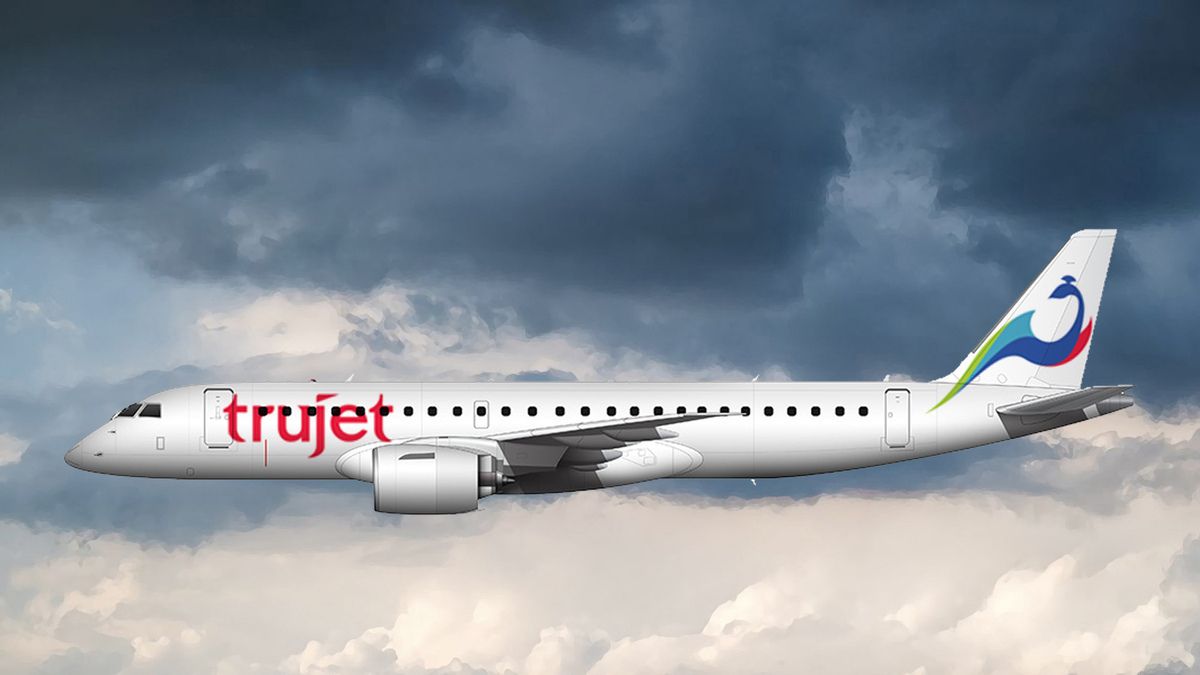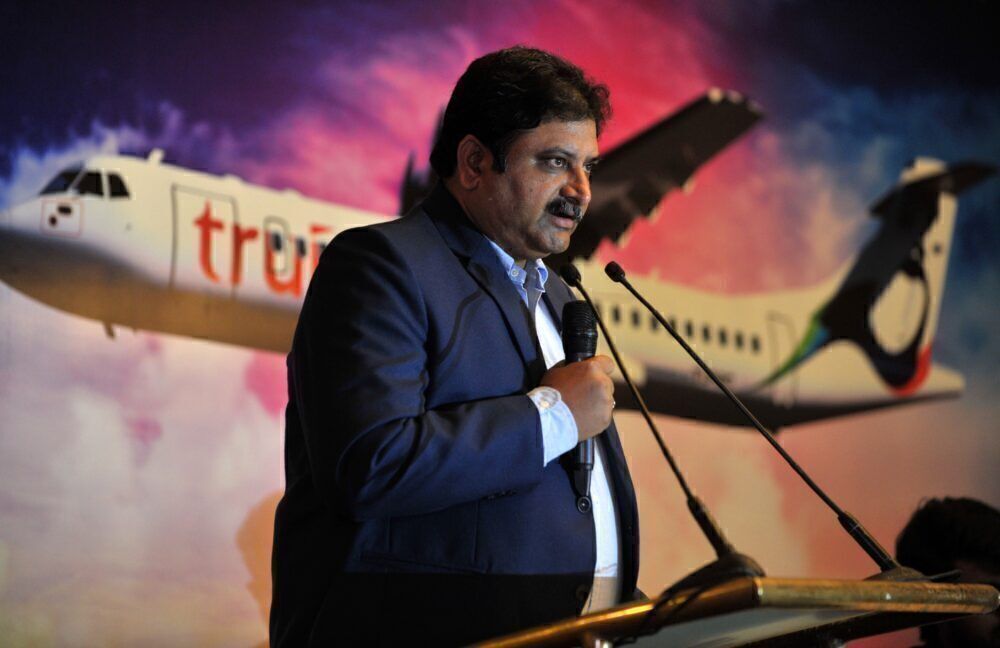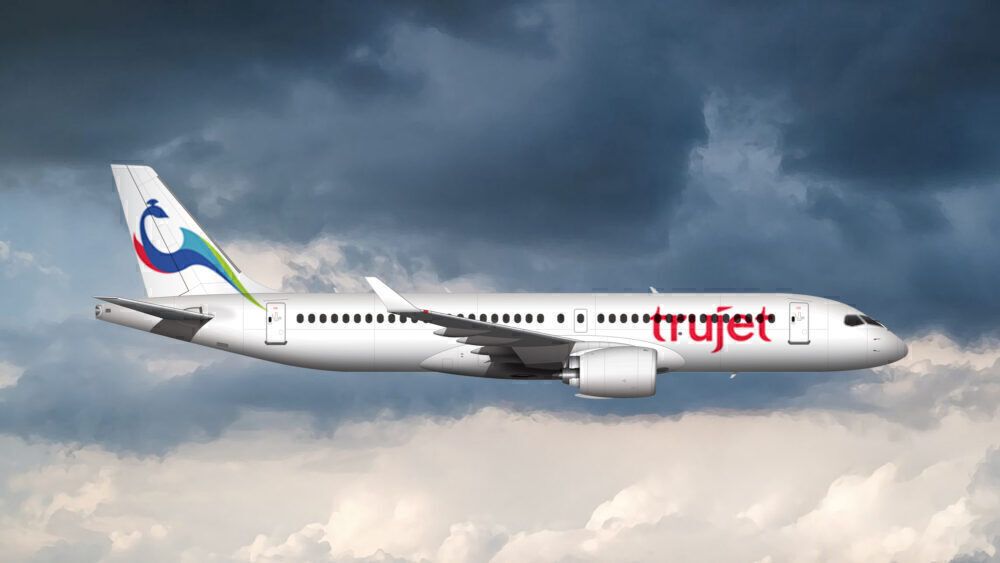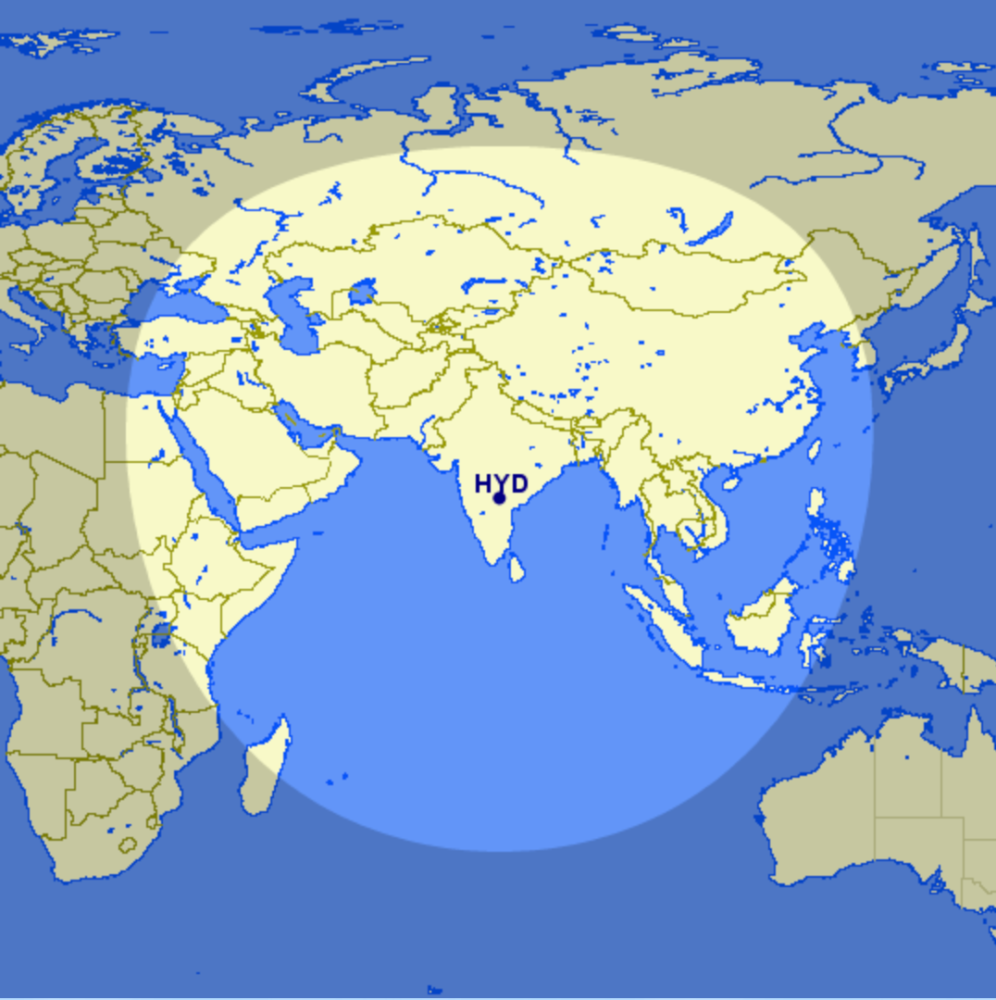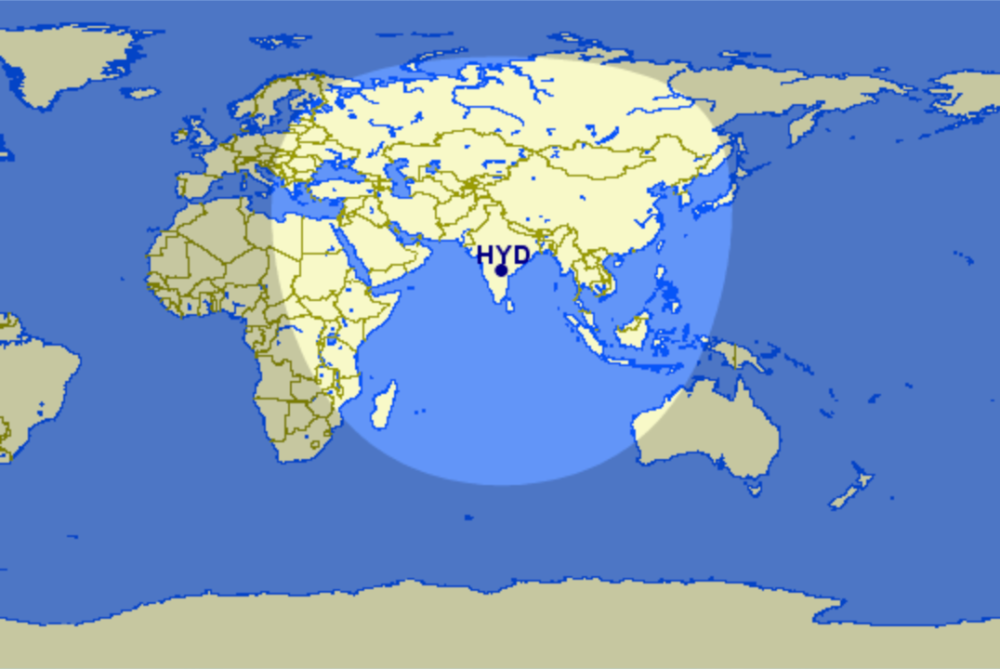India's TruJet is set for a massive expansion. The airline plans to acquire over 100 new aircraft in the coming years and will receive an investment of nearly $1.9 billion. The expansion will see TruJet begin flying longer domestic routes and international services, a big leap from its current regional network. So how can TruJet succeed in the hyper-competitive Indian market? Let's find out.
History
Before diving into TruJet's plans for the future, let's take a quick look at the airline's past. TruJet is a regional airline founded in 2013 and began flying in late 2015. It is owned by a Hyderabad-based infrastructure firm. The carrier kicked off operations with a flight from Hyderabad to Tirupati using a fleet of ATR 72s.
TruJet quickly began expanding its network after 2015 and saw a boost when it started flying UDAN-RCS routes. The UDAN-RCS (Regional Connectivity Scheme) incentivizes airlines to fly to Tier 2 and 3 cities across India and subsidizes costs for the first three years. Using the scheme, TruJet has grown from a regional airline focused in Southern India to a bustling carrier with 25 destinations across the country.
TruJet has run into financial trouble in the last year. Last July, the carrier had ground a majority of its fleet due to unpaid leases, according to BusinessLine. Low demand also meant that TruJet saw extremely low load factors, threatening the survival of the airline. However, the carrier did manage to bounce back from that and has most of its fleet back in the sky now.
As airlines globally plot their recovery, one investor has seen an opportunity to grow TruJet into India's next major airline and is acting fast.
Stay informed: Sign up for our daily and weekly aviation news digests.
Expansion
Last week, New York-based investment firm Interups announced its purchase of 49% of TruJet. The firm had previously tried to bid for Air India but later pulled out due to legal hurdles. However, the setback didn't mean that Interups was no longer interested in the Indian aviation market.
The investment will see the airline transformed from a small regional airline to a major national airline. Interups plans to invest $1.89 billion over the next three years, financing new aircraft orders, hiring more staff, and funding operations. The centerpiece of the expansion will be an upcoming order for 54 Airbus A220s and 54 Embraer E190-E2s in the coming weeks.
The new aircraft will allow the airline to go much further than its current fleet of seven ATR 72s. Moreover, since TruJet has been flying since 2015, it will be able to fly internationally as soon as it acquires 20 aircraft. So where can TruJet expand into?
Lots of options
Both the Airbus A220 and E190-E2 are the most efficient narrowbodies available and have an impressive range and we've previously discussed why they are perfect for the Indian market. While TruJet hasn't disclosed which variant it plans to order, the A220-100 can fly 3,450nm while the -300 can fly up to 3,600nm. Meanwhile, the E190-E2 can fly slightly less at 2,850nm with a full load.
Looking at these numbers, TruJet is likely to deploy the E2 on all of its regional and lower demand domestic routes and the A220 on popular domestic and international services. We already know the carrier's base will remain in Hyderabad, opening hundreds of new destinations for the carrier.
We see TruJet can fly to all cities with India (including islands) and even as far as the Middle East. This means destinations like Leh, Kolkata, Guwahati, and many others are now within reach for the airline. Moreover, with seats for up to 114 passengers, the plane serves growing regional routes well. While it's unlikely the E2s will go international, the option remains open.
The A220
While the E2 does the heavy lifting domestically, the Airbus A220 will play a critical role for TruJet. With space for up to 135-160 passengers (single class), the A220 allows the carrier to fly internationally and serve popular domestic routes.
Routes like Delhi-Mumbai, Hyderabad-Bangalore, Delhi-Kolkata, and others all require higher capacity aircraft to cater to demand and remain profitable. Internationally, the A220 opens up a range of options for TruJet, including access to Europe and East Asia.
The A220-100 will allow TruJet to fly as far as the Eastern parts of Europe and Africa, Southeast Asia, and the Middle East. The larger A220-300, with its extended range, could even open up popular tourism destinations like Greece. However, it's unlikely TruJet will try to go long-haul with the A220.
Instead, the airline is likely to focus on popular and profitable routes in the Middle East, such as UAE, Saudi Arabia, and Qatar. In Southeast Asia, cities like Singapore, Kuala Lumpur, Bangkok, and Phuket would also be major targets for the airline.
For starters, the airline will likely focus on domestic services until the market recovery. However, once traffic is back and borders open, expect international services to follow very soon after.
Will it pan out?
TruJet's expansion is not short on ambition. Interups Chairman Laxmi Narayan has said,
"We plan to expand services to the length and breadth of the country, overseas, and get into segments such as cargo, private charters and helicopter ambulance services. We will be operating in full scale."
While these are certainly possible ventures, running an airline will not be easy. India is filled with low-cost competitors flying very similar routes and willing to cut fares to survive. For TruJet to thrive, it will need to remain focused on its cost and capitalize on popular destinations and potentially major regional routes.
For now, we will look keenly towards TruJet firming up its order for 108 new aircraft in the coming weeks. Once the planes are on their way, expect to hear a lot more about this Indian airline.
What do you think about the future of TruJet? Will all of this pan out? Let us know in the comments!

